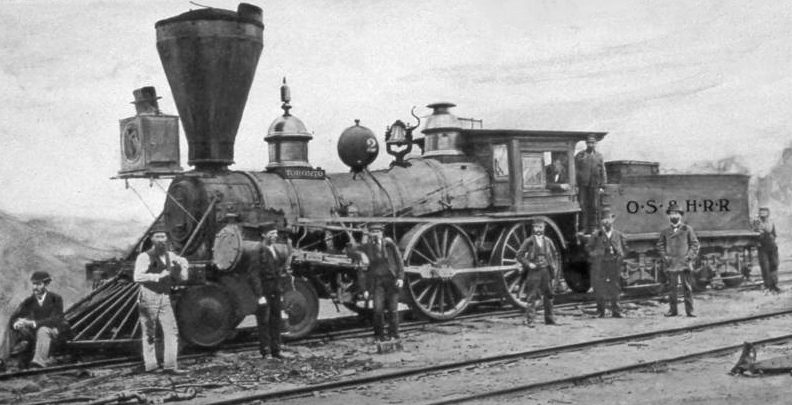Inducted 2001
James Good was a machinist and manufacturer who purchased the Union Furnace Company to bid on contracts for locomotives. His firm constructed “Toronto No. 2” as the first engine for the new Ontario, Simcoe and Huron Union (OS&H) Railway. More significantly, however, this engine was the first locomotive built in Canada.
The locomotive had outside cylinders and a link motion and was completed on April 16, 1853. Over a five day period, it was rolled on temporary wood rails along Queen and York Streets to the permanent track at Front Street near the south end of Bay Street. Its maiden journey was to Machell’s Corners (now Aurora) on May 16, 1853 pulling four passenger cars.
The OS&H Railway, which later became the Northern Railway of Canada, planned to link the three lakes (Ontario, Simcoe and Huron) together with a railway. The railway was planned to start in downtown Toronto and extend north to Barrie and then to Collingwood on Georgian Bay, a distance of 94 miles. The entire track was constructed by 1855 and helped establish Toronto as a major commercial centre, since the rail route saved a three week voyage by ship from Toronto through the Welland Canal, Lake Erie and Lake Huron.
The use of sufficiently powerful and reliable locomotives was a key component to successful railway development. Canadian railways had originally employed British locomotives, but they were unable to haul heavy loads over the difficult terrain and extreme climatic conditions. The “Toronto” was a simpler and heavier model based on the American style that had developed during the 1840s and proved to be up to the task.


